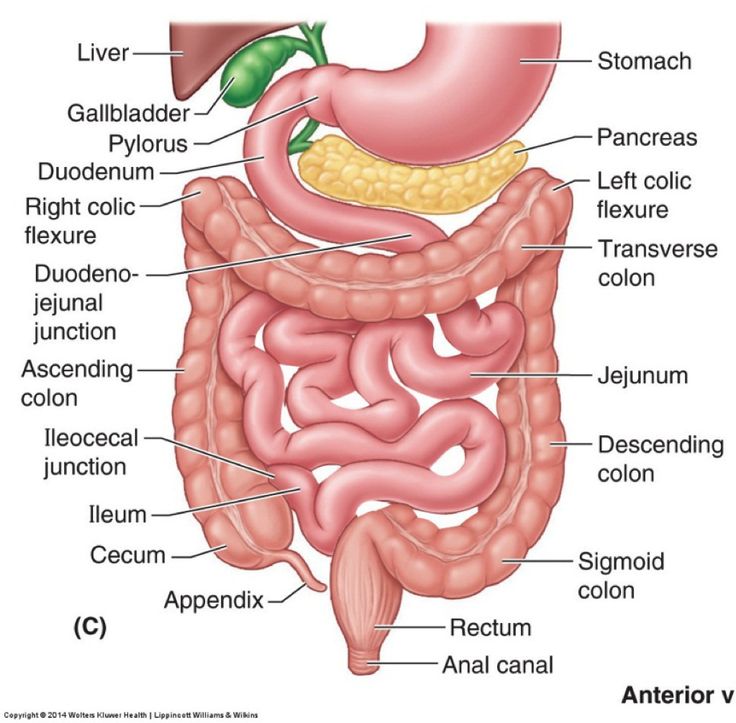
What Does SIBO Cause? – Anatomy
The first part of the small intestine is called the duodenum. This part of the intestine is only about 30 cm long and is differentiated visually by the narrow opening from the stomach which is known as the pyloric sphincter. A sphincter to the average person is the punch line to a bad joke, but in actual fact it is a critical bit of anatomy that acts as an electrical barrier as well as a anatomical barrier between structures. The electrical barrier is in place to isolate contractions to one area of the gastrointestinal tract. In this case, when the stomach is emptying (contracting) the duodenum should not be contracting. The duodenum should have no or very low motility and be preparing to accept the food that is coming from the stomach. The duodenum is also the part of the small intestine that initiates stomach contractions through the production of special hormones. As the duodenum houses the harshest environment in the small intestine, damage to this area is common, which can critically affect motility in both the stomach and later parts of the small intestines. The duodenum mostly absorbs our iron and calcium, among other minerals, which require more acidity to be taken into the body. This is also where the majority of macronutrient (protein, fat and carbohydrate) digestion begins.
The jejunum is the next part of the small intestine, measuring about 250 cms. Unlike the duodenum, the jejunum becomes very alkaline, which should have a pH of roughly 7 to 9. The jejunum is where many of our minerals, vitamins, fatty acids (fats), sugars and most of our amino acids (from protein digestion) get absorbed. This length of the small intestine is critical to our function and where bacteria can can really cause a lot of damage, when chronically overgrowing.
The last part of the small intestine is also critical and is most likely to be affected by SIBO. This is because the ileum is right next to the large intestine where most of the bacteria that make up our microbiome are located. The majority of SIBO test results show overgrowth in ileum, likely as a result of damage to the migrating motor complex, the motor nerves of the small small intestine that are thought to flush contents of the small bowel every 90 to 120 minutes. At the terminal end of the ileum is the infamous ileocecal valve.
The ileocecal valve is actually still debated in medicine, but the majority of medical science agrees on it’s existence and critical function of preventing retrograde movement of large intestinal bacteria into the small intestine. The ileum is the longest part of the small intestine, measuring about 300 cm and is where the majority of extremely critical nutrients are absorbed. Not only is the ileum where we finish the digestion of fats and carbohydrates, but vitamin B12 and some essential amino acids like tryptophan are thought to be absorbed more in the ileum. This fact can have important implications for our mood, sleep and energy.
You must be logged in to post a comment.